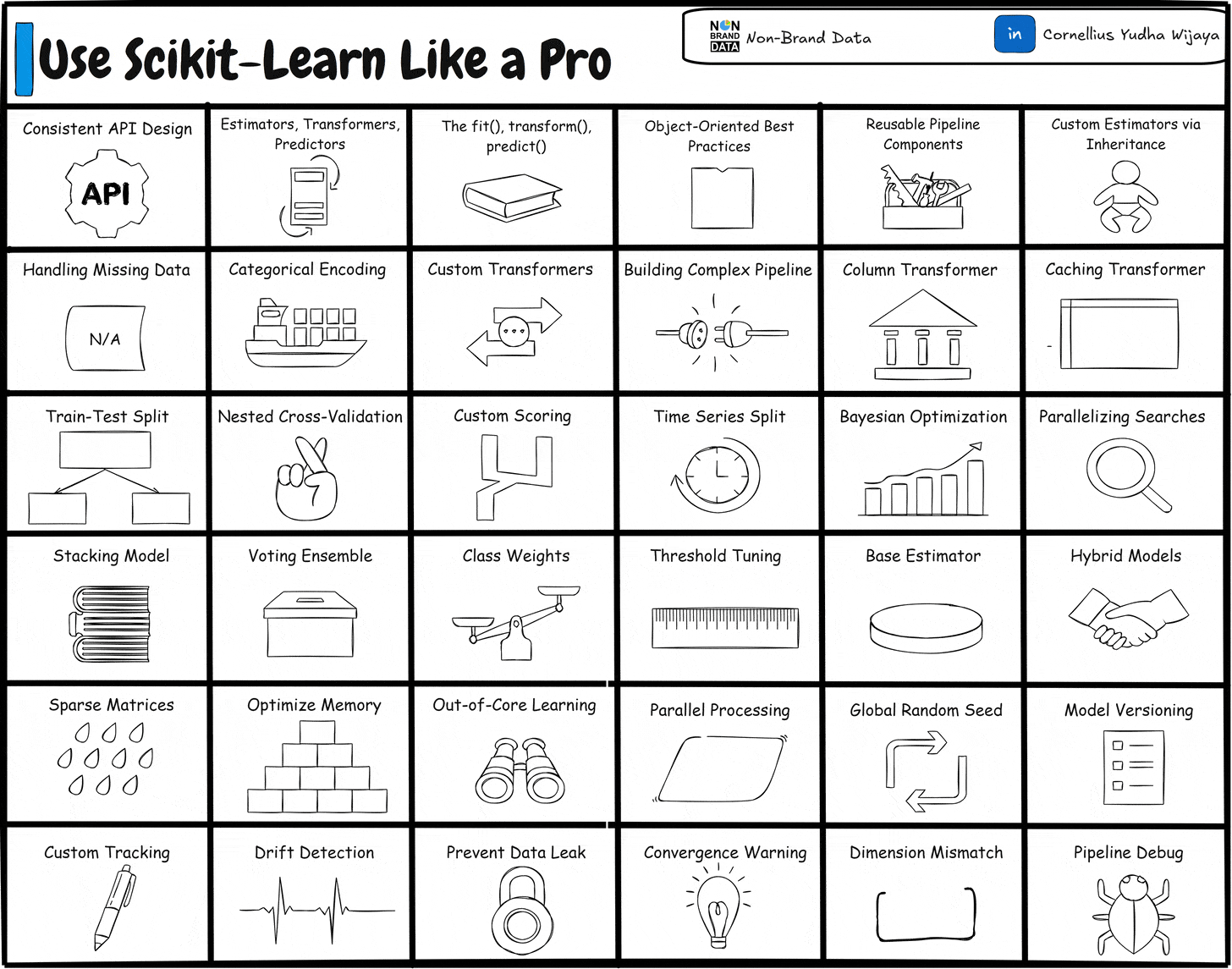Use Scikit-Learn Like a Pro
Move from beginner to professional scikit-learn user with these tips.
Scikit-Learn is a popular open-source machine-learning library for Python. It’s designed to handle any data analysis and modeling task without overcomplicating. Built on top of many scientific libraries, such as NumPy and SciPy, the library offers many useful algorithms for data scientists.
Many data science beginners were taught to use Scikit-Learn in their first introduction to develop a machine learning model, as the library is easy to use and robust. With consistent API across different algorithms, the learning curve for prototyping the model is not that big.
However, not everyone utilizes everything Scikit-Learn can.
In fact, how you use Scikit-Learn will separate you from the beginner and the professional.🚀
That’s why this article will examine ways to enhance your experience with Scikit-Learn.
💪I promise these tips will help you become a pro at Scikit-Learn.
We will discuss various things that comprise the following points:
Mastering the Scikit‑Learn API
1.1. Consistent API Design Philosophy
1.2. Estimators, Transformers, and Predictors
1.3. The fit(), transform(), predict() Paradigm
1.4. Object-Oriented Best Practices
1.5. Reusable Pipeline Components
1.6. Custom Estimators via InheritanceAdvanced Data Preprocessing & Feature Engineering
2.1. Handling Missing Data
2.2. Categorical Encoding
2.3. Custom Transformers
2.4. Column Transformers
2.5. Caching Transformers
2.6. Building Complex PipelineModel Selection & Evaluation
3.1. Beyond Train-Test Split
3.2. Nested Cross-Validation
3.3. Custom Scoring Metrics
3.4. Time-Series Aware Cross-Validation
3.5. Bayesian Optimization
3.6. Parallelizing SearchesAdvanced Modeling Techniques
4.1. Stacking Models
4.2. Voting Ensembles
4.3. Class Weights
4.4. Threshold Tuning
4.5. Custom Base Estimators
4.6. Creating Hybrid ModelsOptimization & Scalability
5.1. Sparse Matrices
5.2. Memory Optimization
5.3. Out‑of‑Core Learning
5.4. Parallel ProcessingProduction‑Grade Practices
6.1. Setting Global Random Seeds
6.2. Versioning Models
6.3. Custom Metrics Tracking
6.4. Drift Detection IntegrationCommon Pitfalls & Debugging
7.1. Data Leakage Prevention
7.2. Handling Convergence Warnings
7.3. Dimension Mismatch Errors
7.4. Debugging Pipeline Steps
Don’t forget to subscribe to get all the access to these amazing pro tips! 👇👇👇
Mastering the Scikit‑Learn API
Before we discuss Scikit-Learn in more depth, we need to understand what makes this library powerful.
It might seem easy, something people think does not need to be delved into, but foundations enable professionals to do their jobs better.
Let’s examine some foundational elements that will assist you in using Scikit-Learn.
Keep reading with a 7-day free trial
Subscribe to Non-Brand Data to keep reading this post and get 7 days of free access to the full post archives.





